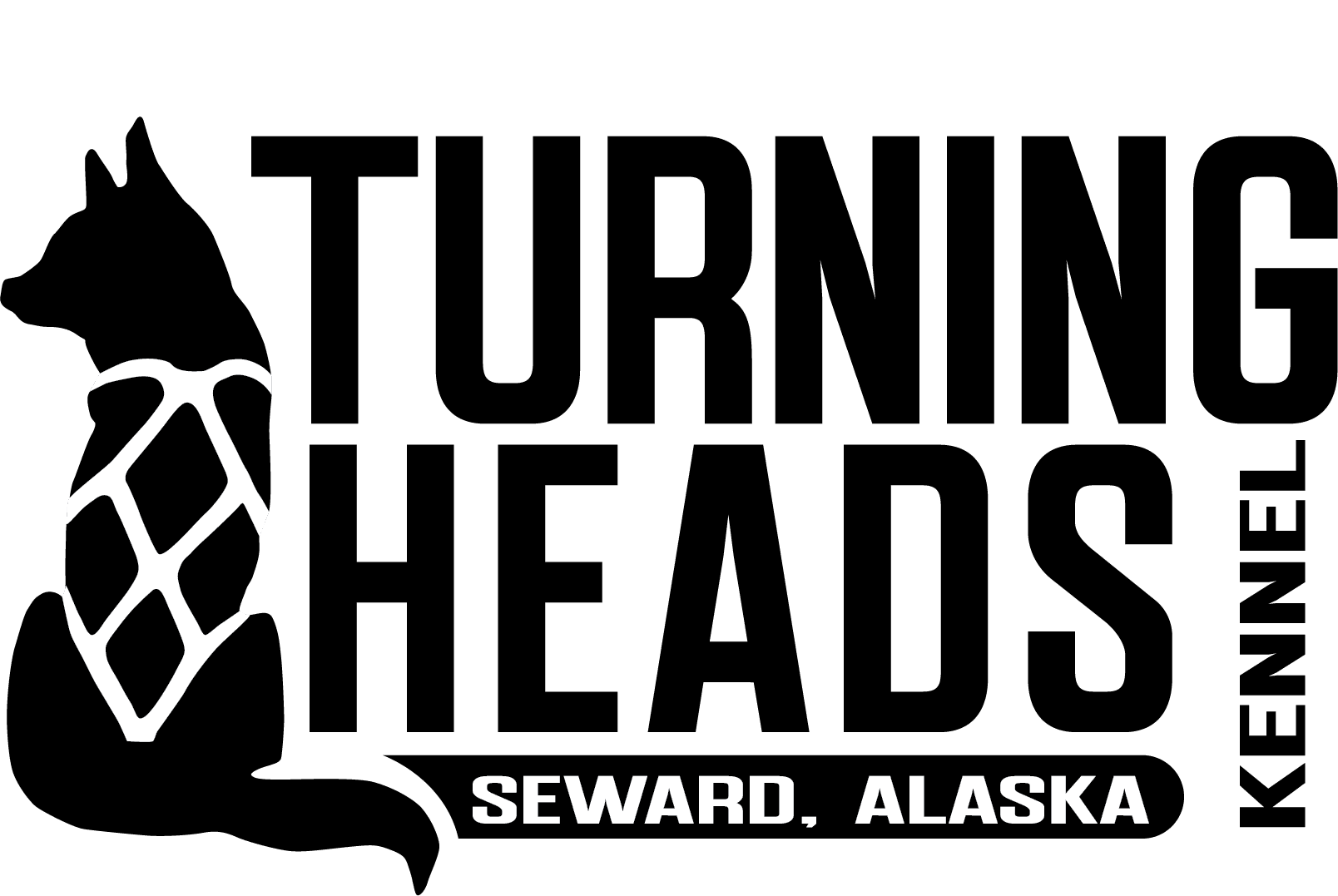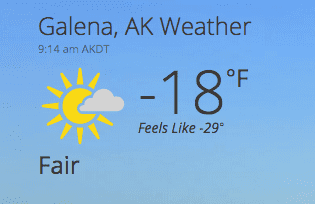Baby it’s cold outside!
In the Iditarod Checkpoint of Galena right now is boasting a balmy temperature of -18 but with windchill and humidity it feels more like -29. He’s approximately 400 miles into the race with about another 550 miles to go. The team, should begin to start settling into a smooth run-rest routine and, if things go as planned, Travis will stay in the top 20.
His goal for this year is a strong top 20 finish, and, if possible, to get the “most improved” award. He wants to keep his expectations realistic, which is a good team. They are a strong group of dogs but three out of the mainteam had to sit this one out, getting replaced by two pups and an old timer. Still it’s one heck of a dog team!
So what is going on during this 24 hour layover? The first thing is taking care of the dogs. During the 24 hour layover, it’s important that the musher gets about 3-4 good meals into their teams. The cold temperatures here mean LOTS of fat. And fortunately for us, we packed for a cold race.
Travis and the dogs can choose from: Beef Fat, Pork Fat, Chicken Skins, and Chicken Fat. Fat provides a good one-two punch when it comes to staying warm and providing energy for the dogs. He also has plenty of Beef, which in itself is nice and fatty, and Fish, which will help the dogs maintain their hydration. Dogs, believe it or not, get a lot of the liquid they need from what they eat — and fish are a very “wet” meal. Hydration in these cold temperatures can be difficult to maintain but is crucial for success.
After the dogs eat, Travis will move into a routine of working and rubbing down the team. Massaging their legs, feet, shoulders and, of course, playing with them. After running for three days, it’s important that the dogs not sit for too long so many mushers use this time as a chance to take dogs on short walks, keeping a close eye on gaits and attitude. With an 82 mile run up ahead, Travis does not want to risk taking a dog that can’t make the trip and having to carry it.
For Travis, the Galena Checkpoint is also welcome break. It will be the first real sleep he has gotten in several days. All those short rests he’s taken on the trail haven’t proven to be quite long enough for him to get some decent shut eye so he should be catching quite a few Z’s here.
He’ll leave Galena with the most sleep he will get until he arrives in Nome.
So far, he’s broken up a lot of the longer runs so it will be interesting to see what he does for the run to HUSLIA which is 82 miles long. Although he will be coming off a long rest, the extremely cold temperatures (I’ve heard as low as -40!) can make the snow very gritty and greatly reduce traveling speed.
Fewer checkpoints this year does provide one difficulty for mushers and their dogs: only one bale of straw is provided at each checkpoint. Travis, and all the other mushers who choose to 24 in Galena, will have almost certainly have used his full bale in keeping the dogs warm in these cold temperatures. When he travels the 82 miles to Huslia, Travis then will be faced with a tough question if he does, in fact, want to break the run up. Does he camp the dogs at -30 without straw? Without extra straw to take for the run, mushers will have to cut spruce bows and lay them down for the team. It’s a good alternative to straw but ultimately means a lot more work for the musher and slightly less insulation for the dogs. Unfortunately, he’s probably had to do this several times as the runs during the first half of Iditarod 2015 have been so incredibly long.
Travis will depart for Huslia tonight around 4pm when the start differential is calculated and, unfortunately for him, that means the temperature will continue to plummet. I wouldn’t be surprised if he stopped and camped along the route to HUSLIA but I also wouldn’t be surprised if he ran straight through. Both strategies make sense, depending on how the team looks.
Fortunately, today and tomorrow should be the last of the cold front with temperatures expected to warm up on Sunday.


